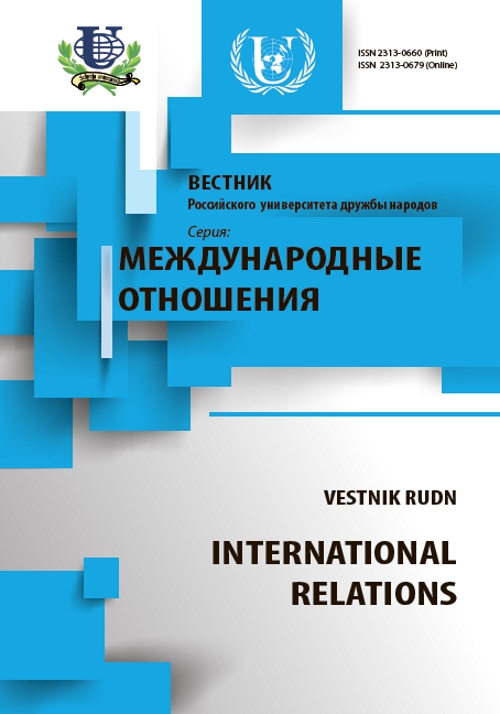Эволюция внешнеполитических доктрин КНР (1950-1990-х гг.)
- Авторы: Цвык А.В.1
-
Учреждения:
- Российский университет дружбы народов
- Выпуск: № 1 (2015): Восточная Азия: возвышение КНР, сотрудничество в целях развития, партнерство с РФ
- Страницы: 53-59
- Раздел: Статьи
- URL: https://journals.rudn.ru/international-relations/article/view/10369
Цитировать
Полный текст
Аннотация
В статье анализируются концептуальные основы внешней политики КНР в период с 1950 по 1990-х гг., а именно: «пять принципов мирного сосуществования», концепция «промежуточных зон», доктрина «трех миров», «четыре модернизации» и др. С момента основания Китайской Народной Республики в 1949 г. азиатское государство прошло несколько этапов формирования независимого внешнеполитического курса, который не только позволяет отвечать на современные вызовы международных отношений, но и обрести право решающего голоса на мировой арене. И если в начале 50-х гг. КНР опиралась исключительно на зарубежной опыт в этой области, то спустя уже десять лет правительство страны вынуждено было выработать новую внешнеполитическую концепцию, не зависящую от СССР и США. В 70-х гг. прошлого столетия Китай не только превращает внешнюю политику в инструмент содействия экономическому развитию, но и фактически становится лидером «Третьего мира». Примечательно, что до сих пор КНР относит себя к развивающимся странам. После распада СССР и краха биполярной системы Пекину вновь пришлось корректировать свои внешнеполитические установки, что привело в итоге к усилению стремления создать полицентричную систему международных отношений. В результате проведенного исследования автор приходит к выводу, что современные концепции Китая в области внешней политики явились закономерным итогом эволюции внешнеполитических доктрин КНР со дня ее основания.
Об авторах
Анатолий Владимирович Цвык
Российский университет дружбы народов
Email: a.tsvyk91@mail.ru
Кафедра теории и истории международных отношений
Список литературы
- Гончаров С.Н. Заметки о военно-техническом сотрудничестве Китая с СССР и Россией во 2-й половине XX в. (с переводом избранных фрагментов из воспоминаний генерал-полковника Лю Хуацина) / отв. ред. и авт. предисл. А.И. Кобзев / ИВ РАН; Фак-т мировой политики МГУ им. М.В. Ломоносова. М.: Ин-т востоковедения РАН, 2013.
- Гурулева Т.Л., Макаров А.В. Китай: многостороннее сотрудничество в системе безопасности Северо-Восточной Азии (Россия, США, РК, Япония, Монголия, КНДР). М.: Юрист, 2011.
- Дэн Сяопин. Основные вопросы современного Китая. М., 1988.
- Капица М.С. Три десятилетия - три политики. М., 1979. С. 339.
- Cвешников А.А. Концепции КНР в области внешней политики и национальной безопасности // Китай в мировой политике. М., 2001.
- Жэньминь жибао. 21 января 1964.
- Жэньминь жибао. 1 октября 1972.
- Жэньминь жибао. 11 апреля 1974.
- Высоко держать знамя идей Мао Цзэдуна, искать истину в практике (Гаоцзю Мао Цзэдун сысян цичжи, цзяньчи шишицюшидэ юаньцзэ) // Дэн Сяопин. Избранные произведения (Дэн Сяопин вэньсюань). Пекин, 1998. Т. 2. Цит. по: Кокорев К.А. Политический режим и модернизация Китая. М.: ИДВ РАН, 2004.
- Внешнеполитические отношения СССР (Сулянь дуйвай гуаньси). Хэнань, 1989.
- Стратегия и управление. (Чжаньлюэ юй гуаньли). 1996. № 3.











